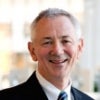 A colleague from the Asian Development Bank visited the other day to talk about a study he is doing on Asia’s middle class. Yet this is not an area we have focused on in the World Bank’s East Asia region – perhaps at our cost. I quickly googled the topic and discovered a rapidly growing literature, including a paper each by Martin Ravallion and Nancy Birdsall just this year.
A colleague from the Asian Development Bank visited the other day to talk about a study he is doing on Asia’s middle class. Yet this is not an area we have focused on in the World Bank’s East Asia region – perhaps at our cost. I quickly googled the topic and discovered a rapidly growing literature, including a paper each by Martin Ravallion and Nancy Birdsall just this year.
Why this attention to the middle class? Empirical evidence shows that growth of the middle class is associated with better governance, pro-growth reforms, even better infrastructure. It appears that as people gain middle class status, accumulate savings, and acquire secondary and tertiary education, they are likely to use their greater political clout to press for accountable government. This includes the rule of law, property rights (they now have more to protect!), and greater public goods supportive of growth including better infrastructure, education, fewer trade restrictions, and economic stability. Interestingly, the larger the middle class a country has, the more likely it is to reduce poverty faster. Ergo – if we are interested in growth and poverty reduction – we better start paying attention to the middle class.
But who are the middle class? Alas, this is where the economics profession lives up to its billing (“ask ten economists a question and you get eleven answers”).
- Banerjee and Duflo (2007) suggest it should include those earning between $2 and $10 per person per day (in 2005 PPP terms – which will be the basis for all dollar numbers hereafter). The bottom bound -- $2 a day – is the median of PPP (Purchasing Power Parity)-based national poverty lines of developing countries; those above this international poverty line can arguably be considered middle class in the limited sense that being middle class means not being poor.
- Ravallion (2009) goes further, anointing the middle class as those earning between $2 and $13 per person per day. Ravallion’s upper bound of $13 a day is derived from the US poverty line in 2005 (about $19,000 for a family of four). According to him, the middle class would not be deemed poor by the standards of their own (developing) country, but would still be poor by the standard of rich countries (read: the US). This is an interesting proposition, but it’s not obvious why a rich country’s poverty line would define a developing country’s middle class.
- Birdsall (2010) includes those earning more than $10 a day, but excludes those in the top 5 percent of the income distribution who she considers rich. Unfortunately, Birdsall’s definition is so restrictive that she finds virtually no middle class in South Asia and very few in East Asia!
- Yet others define the middle class as those within some range of the income distribution – for example, those with incomes between 75 percent and 125 percent of the median of the income distribution. This definition has the obvious advantage of taking the concept very literally by carving out the middle of the income distribution – but falls prey to the obvious criticism that no matter how poor a country is, it would still have a middle class.
And there are others as well.
So where does that leave us? Is there a common definition out there for the “middle class”? What level of definitional purity should we seek – one common definition for all developing countries (similar to the Banerjee-Duflo or Ravallion definition) or different definitions based on country characteristics? Let’s hear your views before I emerge with some thoughts on my own.


Join the Conversation